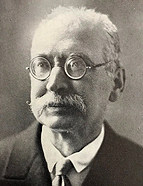

While he continued to teach, the period after 1910 was focused, in terms of historiographical activity, on the production of his two works unanimously considered to be the most important, namely História da Igreja em Portugal [ History of the Church in Portugal ] ( HIP ), a work in eight volumes that he began publishing in 1910, and História de Portugal [History of Portugal] ( HP ), whose publication began in 1922, comprising six volumes, although he did not live to write the last volume planned, which was to cover the period of the Republic. The remaining production from that period seems to be the result of the work required for these two publications, which share a number of defining characteristics of their author ’ s historiographical standing and method .
Firstly, they allow us to place him within the framework of what has been called erudite historiography, following in the footsteps of Gama Barros, whose work he appreciated and which came to be the object of his attention in Gama Barros e a História da Administração Pública em Portugal [ Gama Barros and the History of Public Administration in Portugal] (1921). His concern for accuracy was grounded on the “exact knowledge of the facts” , which should subtract from the historian ’ s “ fantasy ” the deduction of “historical circumstances” , as can be read in the preface to HIP . The positivity of the documentary support, which brought him closer to Herculano – to whom he dedicated a lecture given and published in 1910 – would be the essential task of historiographical work, which is consistent with the work he carried out in this book. His circumstances, however, distanced him from the archival focus of Gama Barros ’ research, of which he was fully aware. In the aforementioned preface, he clearly explains that he made use, above all, of published bibliography, collecting materials “ d ispersed in hundreds of volumes” . Undertaking a work of this magnitude, combining it with his teaching duties, would be incompatible with extensive work of identifying, analysing and processing primary archive sources, which in this work were limited to “certain periods and subjects” . We should also bear in mind that the production of the se volumes was carried out during a period when the documents were scattered between civil and ecclesiastical archives, which would only increase the difficulty pointed out. In addition, he considered that a work of this nature exceeded “the strength of one man” . In his view, the HIP corresponded to the “ first step ” of outlining the “ layout of the building” , which would have to be finished with the contribution of the “ many ” who would bring materials for its construction. His statement about the work of “ coordinating ” the materials already published in various collections and which, “ sought out diligently and used judiciously” , could be enough for the “ complete and perhaps definitive formation of many pages of the ecclesiastical history of Portugal’ is highly questionable, to say the least, a standpoint that is understandable given his minimisation of the specifically hermeneutic task of historiographical work. Thus, the work excels in its efforts to establish the facts with precision. This concern extended beyond the publication of the work, as evidenced by the updates that, in view of the new bibliography that had emerged in the meantime, were being prepared for the second edition. Some of these changes are incorporated and signalled in the 1967 edition, the one that is most easily accessible and quoted today, prepared by Damião Peres from the annotated copy of the 1 st edition belonging to Fortunato de Almeida himself.
This work is financed by national funds through FCT - Foundation for Science and Technology, I.P, in the scope of the projects UIDB/04311/2020 and UIDP/04311/2020.
